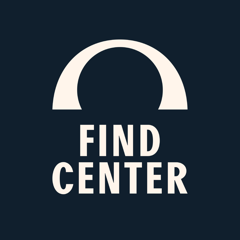The time between diagnosis and death presents an opportunity for “extraordinary growth.”
YOU MIGHT ALSO LIKE
CLEAR ALL
BY TOPIC
BY TEACHER
BY TYPE
FILTER

TOPIC
- Depression (29)
- Anxiety (27)
- Identity (23)
- Living with Illness (22)
- BIPOC Well-Being (19)
- Self-Care (18)
- Athlete Well-Being (17)
- Work Challenges (15)
- Death-Positive Movement (12)
- Fatigue (12)
- Insomnia (12)
- Illness and Injury (11)
- Offering Support to Others (11)
- Search for Purpose (11)
- Black Well-Being (10)
- Grief (10)
- Anger (9)
- Chronic Pain (9)
- Communication Skills (9)
- Decision Making (9)
- Honoring Emotion (9)
- Death or Loss of a Loved One (8)
- Entrepreneurship (8)
- Parenting (8)
- Sleep Disorders (8)
- Women’s Well-Being (8)
- Aging (7)
- Disabled Well-Being (7)
- Fear (7)
- Handling a Loved One’s Illness (7)
- Mind-Body Connection (7)
- Talk Therapy (7)
- Young Adult Well-Being (7)
- Betrayal (6)
- Community Healing (6)
- Exercise (6)
- Hospice (6)
- Identity Shifts (6)
- LGBTQIA Well-Being (6)
- Managing Energy (6)
- Performance Pressure (6)
- Suicide (6)
- Work-Life Balance (6)
- Female Empowerment (5)
- Friendship (5)
- Leadership (5)
- Mental Health Challenges (5)
- Performance Anxiety (5)
- Physical Health (5)
- Relationship Challenges (5)
- Self-Limiting Beliefs (5)
- Self-Pressure (5)
- Situational Depression (5)
- Spiritual Crisis (5)
- Stress (5)
- Stress Management (5)
- Traumatic Grief (5)
- Afterlife (4)
- Asking for Help (4)
- Buddhism (4)
- Burnout (4)
- Caregiver Well-Being (4)
- Chronic Health Conditions (4)
- Courage (4)
- Cross-Cultural Dynamics (4)
- Death or Loss of a Child (4)
- Endurance (4)
- Family Dynamics (4)
- Growth Mindset (4)
- Happiness (4)
- Integrative Medicine (4)
- Latinx Well-Being (4)
- Neurodiversity (4)
- Psychedelic Research (4)
- Resilience (4)
- Self-Discovery (4)
- Self-Esteem (4)
- Setting Limits and Boundaries (4)
- Speaking Your Truth (4)
- Trauma Healing (4)
- Work Relationships (4)
- Acceptance (3)
- Addiction (3)
- Addiction Recovery (3)
- Child’s Emotional Growth (3)
- Clinical Depression (3)
- Existentialism (3)
- Gratitude (3)
- Healing Approaches (3)
- Hope (3)
- Loneliness (3)
- Men’s Well-Being (3)
- Near-Death Experience (3)
- Psilocybin (3)
- Psychology (3)
- PTSD (3)
- Racial Identity (3)
- Racism (3)
- Self-Compassion (3)
- Self-Expression (3)
- Self-Love (3)
- Self-Worth (3)
- Sleep (3)
- Spiritual Healing (3)
- Transformation (3)
- Veteran Well-Being (3)
- Zen Buddhism (3)
- AAPI Well-Being (2)
- Activism/Service (2)
- Acupuncture (2)
- ADD/ADHD (2)
- Anger Management (2)
- Authenticity (2)
- Autism (2)
- Awareness (2)
- Belonging (2)
- Christianity (2)
- Chronic Anxiety (2)
- Cognitive Behavioral Therapy (2)
- Connection (2)
- Connection with Nature (2)
- Cross-Cultural Parenting (2)
- Divorce and Breakup (2)
- Eating Disorders (2)
- Ego Dissolution (2)
- Emotional Intelligence (EQ) (2)
- Epigenetics (2)
- Feminism (2)
- Forest Bathing (2)
- Goal Setting (2)
- Grit (2)
- Guided Imagery (2)
- Guilt (2)
- Healthy Eating (2)
- Imagination and Creativity (2)
- Laughter Therapy (2)
- Letting Go (2)
- Life Challenges (2)
- Life-Altering Injury (2)
- Massage (2)
- Megavitamin Therapy (2)
- Mindfulness Meditation (2)
- Mindfulness Practices (2)
- Nutritional Medicine (2)
- Othering (2)
- Presence (2)
- Psychedelic-Assisted Therapy (2)
- Psychology and Spirituality (2)
- Racial Discrimination (2)
- Self-Actualization (2)
- Sudden Weight Change (2)
- Suffering (2)
- T’ai Chi (2)
- Transgender Well-Being (2)
- Transitions (2)
- Values (2)
- Vulnerability (2)
- Yoga (2)
- Zen Meditation (2)
- Abandonment (1)
- Acupressure (1)
- Adaptability (1)
- Alcohol Addiction (1)
- Aromatherapy (1)
- Body Image (1)
- Body Positivity (1)
- Brain Health (1)
- Building Culture (1)
- Calming Meditation (1)
- Child’s ADD/ADHD (1)
- Climate Change (1)
- Collaboration (1)
- Compassion (1)
- Compassion Meditation (1)
- Confidence (1)
- Consciousness (1)
- Creative Well-Being (1)
- Death or Loss of a Parent (1)
- Dementia (1)
- Diet and Nutrition (1)
- Disconnection (1)
- Emotional Labor (1)
- Empowerment (1)
- Energy Balancing (1)
- Energy Healing (1)
- Environmental Justice (1)
- Failure (1)
- Fellowship and Community (1)
- Flower Essences (1)
- Forgiveness (1)
- Gender Identity (1)
- Genetics (1)
- Grace (1)
- Hero’s Journey (1)
- Holism (1)
- Human Potential (1)
- Hypnosis (1)
- Immortality (1)
- Imposter Syndrome (1)
- Indigenous Healing Approaches (1)
- Indigenous Well-Being (1)
- Insight (Vipassana) Meditation (1)
- Journaling (1)
- Joy (1)
- Learning Styles (1)
- Leaving a Religion (1)
- LGBTQIA Sexuality (1)
- Life Force Energy (1)
- Loss of Partner/Spouse (1)
- MDMA (1)
- Meditation (1)
- Mediums (1)
- Military to Civilian Re-entry (1)
- Mindfulness (1)
- Moral Philosophy (1)
- Neuroplasticity (1)
- Nonbinary Well-Being (1)
- Panic Attacks (1)
- Passion (1)
- Past Life Regression (1)
- Past Lives and Reincarnation (1)
- Peak Performance (1)
- Perception (1)
- Personal Development (1)
- Personality Typing (1)
- Positive Thinking (1)
- Productivity (1)
- Qigong (1)
- Racial Healing (1)
- Racial Justice (1)
- Rebirth (1)
- Regret (1)
- Reiki (1)
- Relationship with Time (1)
- Reproductive Health (1)
- Rest (1)
- Romantic Relationships (1)
- Self-Development (1)
- Self-Healing (1)
- Self-Mastery (1)
- Self-Realization (1)
- Shame (1)
- Smoking Addiction (1)
- Social Anxiety (1)
- Social Justice (1)
- Social Presence (1)
- Spiritual Awakening (1)
- Spiritual Growth (1)
- Spiritual Practices (1)
- Spiritual Quest (1)
- Taoism (1)
- Tarot (1)
- Tibetan Buddhism (1)
- Transcendent Experience (1)
- Unconscious Bias (1)
- Visualization (1)
- Well-Being (1)
- Whiteness (1)
- Women’s Rights (1)
FILTER

TEACHER
- Parker J. Palmer (3)
- Stephen Levine (3)
- Viktor E. Frankl (3)
- James Hollis (2)
- Jay Shetty (2)
- Jessica Dore (2)
- john a. powell (2)
- Karla McLaren (2)
- Michael Phelps (2)
- Rachel Naomi Remen (2)
- Ram Dass (2)
- Rick Fields (2)
- Robert Firestone (2)
- Adam Grant (1)
- Andrew Holecek (1)
- Atul Gawande (1)
- Barbara Fredrickson (1)
- Caroline Shola Arewa (1)
- Carolyn Baker (1)
- Deepak Chopra (1)
- Duane Elgin (1)
- Edward Hallowell (1)
- Elisabeth Kübler-Ross (1)
- Eric Maisel (1)
- Gabor Maté (1)
- Hyla Cass (1)
- J. Krishnamurti (1)
- Jean Houston (1)
- Jean Shinoda Bolen (1)
- JoAnn Loulan (1)
- Joanna Macy (1)
- Judith Orloff (1)
- Kathleen Dowling Singh (1)
- Ken Dychtwald (1)
- Kris Carr (1)
- Lissa Rankin (1)
- Maria Popova (1)
- Mark Manson (1)
- Mark Victor Hansen (1)
- Martha Beck (1)
- Mirabai Bush (1)
- Monnica Williams (1)
- Natalie Goldberg (1)
- Nataly Kogan (1)
- Neale Donald Walsch (1)
- Oliver Sacks (1)
- Ondrea Levine (1)
- Rachel Held Evans (1)
- Rainer Maria Rilke (1)
- Roberto Assagioli (1)
- Roland Griffiths (1)
- Scott Shute (1)
- Serene Jones (1)
- Simone Biles (1)
- Thich Nhat Hanh (1)
- V (1)








